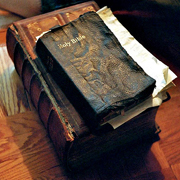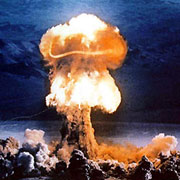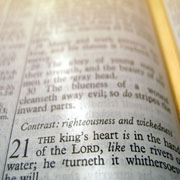
| Back To Meditation Home Page |

Custom Search
|
Are we Living in the Last Days...End Times? See Breaking News |
 |
| __________________________ |
 |
_________________________ |
| __________________________ |
As You Study the Biblical Last Days in the News... Discover the Bible As Well |
 |
| __________________________ |
 |
| __________________________ |
 |
| __________________________ |
To Know God's Word Read Scripture |
 |
_________________________ |
To Read God's Word Your Reading Schedule |
 |
_________________________ |
 |
| __________________________ |
Thought Provoking Articles for Your Meditation |
 |
_________________________ |
|
The Origins of Biblical History |
|---|
 |
When we read about the biblical patriarchs in Genesis, particularly who begat who and how long they all lived, the tendency for many is to gloss over those verses and move on to more interesting accounts. Why did GOD put this seemingly mundane and maybe even boring material in the Bible? Why was it deemed important enough to be included? All these men lived their lives, long lives at that, one after another, a long, long time ago. But is that entirely true? According to the Bible these ancient men did live long lives but not exactly in a serial manner. When matching birth dates and lengths of life these men experienced, a fascinating fact becomes surprisingly evident. Even though these men were related and were born one after another, generation after generation, there were long periods of time that generations of theses men were alive on earth.together. The chart below illustrates the birth, lifespan and death of the first twenty generations of mankind, from the fall of Adam in the Garden of Eden to the death of Abraham more than 2000 years later. It is interesting to note that for fifty-six years the first nine generations shared their lives on earth together. They all could have talked with each other during this time. By examining the chart below it is evident that there are only three "links", backwards, necessary from Abraham to Adam (Abraham>Shem, Shem>Methuselah and Methuselah>Adam). Notice that Shem and Eber whose deaths were in 2158 and 2178 respectively, both outlived all their descendants down to Abraham. In the patriarchal society that existed in those times, it is no wonder that the Israelites were also known as "Semites" (after Shem) or "Hebrews" (after Eber). |
 |
Envision, if you can, Noah asking his father Lamech, "Dad, could you tell me again about the times you talked to Adam about the Garden of Eden"? Or, "What kind of fruit did great-great-great-great-great-great-great-grandma Eve eat in the Garden? Or even, "What did Adam think about his life, his sin and his GOD"? |
 |
Imagine Abraham saying to Shem, "Tell me, how did you and your brothers, Ham and Japheth, and your father, Noah, build the Ark"? Or, "what did the people around you say and think about the construction of the ark"? Or even "What was it like on the ark during the forty days and nights of rain.What did you think when you finally set foot on dry land again, knowing you were the only people alive on the earth"? Did conversations like this take place? Maybe, maybe not.but they could have since Shem was alive for most of Abraham's entire lifespan. The Bible is scrupulous in recording the ages of the patriarchs from Adam to Abraham. It states how old each was when his son, was born, how long each lived after that, and how old each was when he died. Consequently, by simple arithmetic, the calendar year since the fall of Adam, that each patriarch was born, lived and died can be easily and accurately calculated. The genealogy and associated time involved is continuous and any possibility of any time gap is thereby eliminated from these Genesis family tree lists. Some have theorized and stated that there are gaps in these genealogies. To make the Biblical timeframe accommodate present secular geology and archaeology concepts gaps are required. However, there are no gaps in the Genesis genealogies.
Besides genealogical records, the date of the Flood after Creation can also be accurately affirmed. From the chart above it can be seen that Noah was born 1056 years after the fall of mankind and so the Flood occurred 600 years later, in the year 1656, which was 352 years before Abraham was born. There are 11 verses recorded in Genesis, which read, " These are the generations of". The word generation is the Hebrew word "toledoth" which means origins, history, or family history. The statements referenced all come after the events they describe, and the events recorded in each division, all took place before rather than after the death of the individuals named, so they may very well be subscripts or closing signatures, rather than superscripts or headings. If this is so, the most likely explanation is that Adam, Noah, Shem, and the others each wrote down on clay tablets an account of the events which occurred during their lifetime, and passed them down from father to son via the line of Adam, Seth.Methuselah.Noah, Shem.Abraham, Isaac, Jacob, Levi, Kohath, Amram and finally to Moses (the 26 th generation from Adam). Moses under the guidance of the Holy Spirit, selected, compiled and edited these, along with his own comments, into the book we now know as Genesis. If there were such written records, those records would have helped keep accurate any oral accounts of the historical family events. The huge ancestral overlap would also ensure accurate recitation of the true facts of that historical record. The genealogical details of the early patriarchs are given three times in the Bible-in Genesis chapters 5 and 11, First Chronicles chapter 1 and in Luke chapter 3. This repetition shows the importance that God places on these "mundane and boring" details. The writers of the New Testament reinforce the fact that these genealogies are a real record of history and represent literal, real people. The book of Jude specifically refers to Enoch as being " the seventh from Adam ". this matches scripture found elsewhere.
The Psalms promise blessing when mediating on scripture. The verse above proclaims that all scripture is profitable for us. This must mean that even the "mundane and boring" sections of scripture are good for us. Even dry genealogies give us a place to meditate on GOD and His word. Do some meditating today! |
Be blessed and meditate or meditate and be blessed!!!!.. The choice is yours!! |